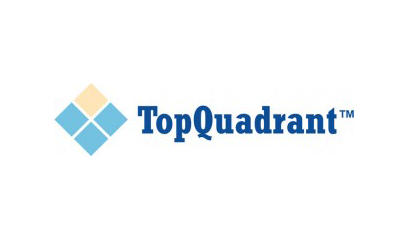
We had a brief chat with Robert Coyne (COO) and Ralph Hodgson (CTO) from SEMANTICS 2017 Gold Sponsor TopQudrant. Read full interview below about data-governance, the latest trends in this field, Robert’s and Ralph’s expectations for SEMANTICS 2017 as well as the workshop conducted by TopQuadrant!
Can you tell something about your work/research focus?
TopQuadrant helps organizations succeed in semantic-based data governance. We provide agile solutions for managing information regardless of its structure, origin or location. Our products use standards-based graph technologies (linked data)—because connections are important. Making information easy to connect enables unparalleled flexibility for organizing, governing and using it in today's dynamic data environments.
TopBraid Enterprise Data Governance™ (TopBraid EDG) is an agile data governance solution based on W3C semantic standards and linked-data technologies. TopBraid Enterprise Vocabulary Net™ (TopBraid EVN) supports collaborative management of taxonomies and ontologies and offers auto-classification of documents and search enhancement.
TopQuadrant customers include many government agencies and Fortune 1000 companies in numerous industries including pharmaceutical, financial services, energy and digital media. For more information, visit www.topquadrant.com.
Which trends and challenges do you see for linked data/semantic web and why are they important for TopQuadrant?
There seems to be a growing appreciation for linked data/semantic web technologies to help solve critical problems for all enterprises and across a variety of industries, particularly in the challenging financial regulatory world. As a result, leading industry bodies such as the Enterprise Data Management (EDM) Council have taken a strong position that semantic engineering and linked data technologies provide the best foundation for solutions to address mandated governance, infrastructure, and quality requirements.
Below are three trends that we support that are leading the advancement and strategic, enterprise application of linked data technologies.
We note that TopQuadrant’s products (TopBraid EDG and EVN) and the platform they are built on are thoroughly W3C semantic standards-based and provide full, out-of-the-box support for SHACL, industry standard ontologies such as FIBO, Schema.org and others, and modular, ontology-driven support for regulatory compliance solutions including GDPR.
Shapes Constraint Language (SHACL)
SHACL is a new W3C standard for data validation and recently reached full recommendation status. This is significant addition to the semantic standards stack and addresses a critical need for enterprises looking to ensure their organizations data quality. As Jan Voskuil, CEO of Taxonic and an experienced information management professional, observed:
“… SHACL is a significant step towards making Linked Data more viable and useable in practical situations. Many people believe that once it is an official standard, SHACL will be a game changer in data governance and Big Data.”
TopQuadrant personnel were actively involved in the W3C working group that developed SHACL and helped to shepherd its curation to become an official recommendation.
The EDM Council has also confirmed that the system of record for FIBO (Financial Industry Business Ontology) is the W3C standard – Web Ontology Language (OWL). All expressions of FIBO are derived from the OWL. The ontology is also available as a SKOS vocabulary of terms and as a searchable glossary of terms in HTML. These natural language glossaries include definitions and references on how each term relates to the core ontology. Sample UML diagrams of FIBO are available via the access portal using the Semantic Modelling for Information Federation (SMIF) standard.
General Data Protection Regulatory (GDPR)
The EDM Council included GDPR as one in a list of regulatory actions that could benefit from semantic engineering and we couldn’t agree more. Many enterprises are finding that graph-based knowledge representations are essential in meeting their regulatory compliance challenges. We have developed a regulatory compliance ontology called RECO that we use to express the obligations of GDPR. By connecting all the related metadata, data, forms, and other compliance collaterals, these technologies enable organizations to navigate complex data governance landscapes such as those entailed in GDPR.
Other trends that we are working on that showcase why W3C Semantic Technology Standards are important for Data Governance include:
What are your expectations about Semantics 2017 in Amsterdam, what makes it special for TopQuadrant as a company?
TopQuadrant is currently working on initiatives that are built on the foundation of Linked Data/Semantic Web, some of which we are presenting at this year’s conference. With the growth and adoption of semantic technologies Semantics 2017 is a special place for TopQuadrant because it gives us a chance to discuss the latest developments in semantic technology, such as the recent promotion of SHACL to a recommended standard, with our peers. TopQuadrant will be conducting a full day tutorial on SHACL at the conference.
Do you have recommendations for people who want to explore your field a bit more thoroughly?
TopQuadrant continues to educate its marketplace on the benefits of semantic web technology particularly as it relates to data governance. We have produced a number of resources in the forms of white papers, webinars and videos that highlight different applications of our technology including semantic search, metadata management, reference data management and semantic data governance for GDPR compliance.